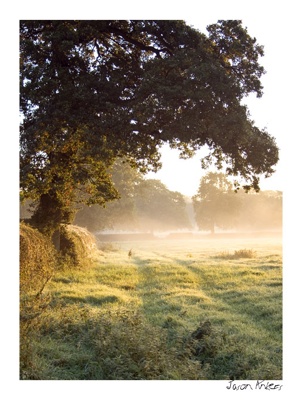 Creepy
Creepy  Creepy
Creepy  Food
Food 10 Foods That Went from Garbage to Gourmet
 Animals
Animals Ten Animals with More Interesting Sex Lives Than You
 Weird Stuff
Weird Stuff 10 Ridiculous Things Hackers Have Controlled Remotely
 The Arts
The Arts 10 Great Movies That Were Made into Bad Musicals
 Miscellaneous
Miscellaneous 10 Hilarious Excuses Firms Once Gave to Cover Up Their Bad Deeds
 Health
Health 10 Fascinating Facts About Accidental Medical Discoveries
 Our World
Our World 10 Iconic Landmarks That Were Nearly Called Something Else
 Music
Music 10 Musicians Who Became Famous After Death
 Crime
Crime 10 Scientists Convicted of Serious Crimes
 Creepy
Creepy 10 Families Whose Houses Scared Them to Death
 Food
Food 10 Foods That Went from Garbage to Gourmet
 Animals
Animals Ten Animals with More Interesting Sex Lives Than You
Who's Behind Listverse?

Jamie Frater
Head Editor
Jamie founded Listverse due to an insatiable desire to share fascinating, obscure, and bizarre facts. He has been a guest speaker on numerous national radio and television stations and is a five time published author.
More About Us Weird Stuff
Weird Stuff 10 Ridiculous Things Hackers Have Controlled Remotely
 The Arts
The Arts 10 Great Movies That Were Made into Bad Musicals
 Miscellaneous
Miscellaneous 10 Hilarious Excuses Firms Once Gave to Cover Up Their Bad Deeds
 Health
Health 10 Fascinating Facts About Accidental Medical Discoveries
 Our World
Our World 10 Iconic Landmarks That Were Nearly Called Something Else
 Music
Music 10 Musicians Who Became Famous After Death
 Crime
Crime 10 Scientists Convicted of Serious Crimes
Top 10 Tips For Better Photos
With the advent of digital cameras, every man and his dog has become a photographer. The best thing about digital photography is the fact that you can take thousands of photos at no cost, so you can experiment with these tips. Remember, this is just a rough guideline – you can break all of these rules and still take amazing photos – but it is good to know the rules before you break them.
10. Direct Your Photos
Candid photos make for some of the best photos around, but if you are taking a family portrait, or any photograph with a group of people, spend some time directing your subjects to create a much more interesting photograph. Throw in some props or try taking the photo from various viewpoints and angles. Try to let your subjects personalities show in the photograph. Tight groups make the best photos.
9. Go Vertical
The majority of people when taking photographs will take them on a horizontal plane. However, some subjects really lend themselves to vertical photography – for example the Eiffel Tower. Portrait photos are often best done vertically (hence the fact that vertical photos are referred to as “Portrait”). Before taking your photos, turn the camera sideways and look at the same scene – you may find that the vertical perspective gives a much more interesting result. This rule works both ways – if you normally take vertical photos – try shooting some horizontal ones occasionally.
8. Use Flash Outside
When taking photos outdoors, using the fill flash setting can dramatically improve the quality of your prints. Use it in bright sunlight to lighten dark shadows under the eyes and nose of your subject – this is especially important when the sun is directly overhead or behind your subject. You can also use it on cloudy days to brighten up faces so they stand out from the background.
7. Use a Plain Background
A cluttered background can be very distracting in your photographs – so try to get photos with clear backgrounds or not too much activity. It is also a good idea (when you can’t get a clear background) to look around your scene in the viewfinder to make sure that you are not taking a photo of a person with a pole sticking out of their head! If so, change angles.
6. Lock the Focus
Most modern digital cameras allow you to lock your focus. This is normally done by pressing the shutter button half way when you have your focus as you want it. Keep pressing and reframe your shot – the focus will stay the same. Press the shutter button the rest of the way. This is a great way to focus on a less dominant aspect of a photograph, or an off-center object without losing your photographs balance.
5. Get Down on their Level
This is especially useful if you photograph animals, children, or anything lower than eye level. Get down on your knees and take the photo from the perspective of the subject – you get a much more personal and professional looking result. This is also a good tip for general photography – instead of photographing standing up, try looking at things from different heights and angles – you will see the world in a new light and get some great unique photos. That’s my cat Dexter incidentally.
4. Know your Flash
If you take a photograph beyond your maximum flash range, it will be too dark – get to know the range of your flash. For many cameras it is about four steps away – but check your manual and do some tests to be sure. Also be sure not to use the flash too close, as you will get overexposed photos.
3. Move in Close
By moving in close to an object, you reduce a lot of unnecessary background noise – allowing your viewers to really focus on the subject. This gives great impact. Try taking photographs where your subject fills the viewfinder – this is also a good way to get some of the best portrait photos – just ignore your subjects objections if they think you are too close (some people are not comfortable with very close up photographs of themselves).
2. Watch the Light
Light is the most important aspect of photography – before taking your photo you should really try to observe what the light is doing. You may need to change your position or some of the objects in the photograph in order to optimize the lighting. For people pictures choose soft light (cloudy) days – try to avoid overhead light, which causes harsh shadows. For scenic photographs, early morning and early evening are the best – these will give you photographs with long shadows and rich color.
1. Move from the Middle
This one tip alone will dramatically improve your photos – do not center your subject. Almost every photograph taken by an amateur has a centered subject. If you put your subject at the side of the photograph you will get a much better result. There are certain areas in a photograph frame that give a much greater balance and appearance to the photograph. Imagine your frame is lined with a tic-tac-toe grid – try to put your subject on one of the intersections of lines.
Bonus: Take a lot of photos
Digital photography costs very little – you have no processing costs and no film costs. The perfect photo is often one in a thousand – so take one thousand! You might not get your perfect shot, but the more photos you take the better your chances. Get some good software to help you go through your photographs quickly – I recommend Adobe Lightroom, or Apple iPhoto.


















